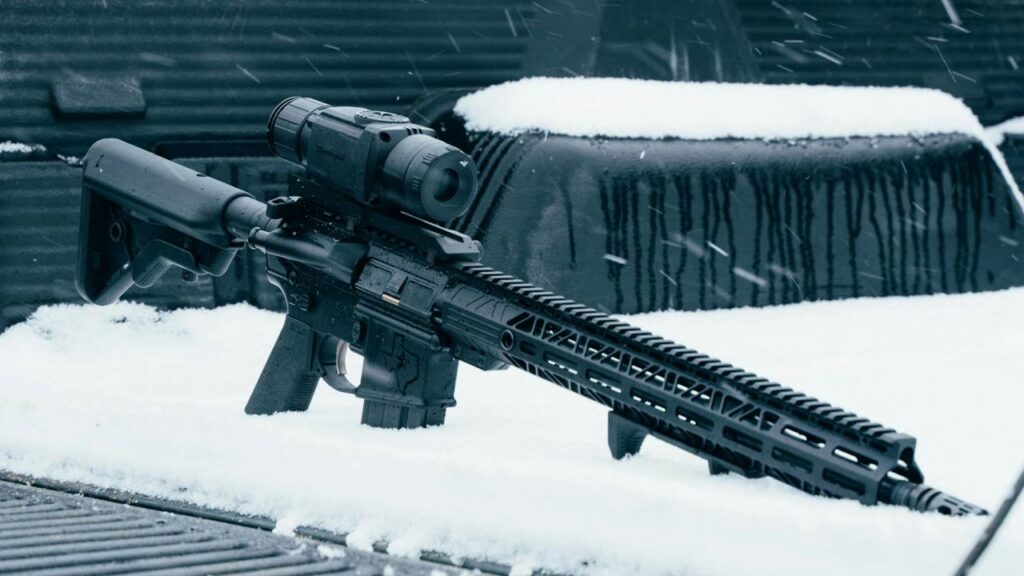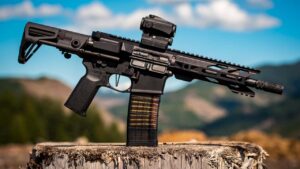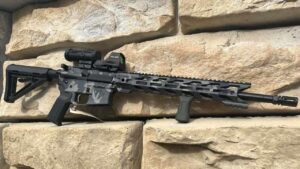As we gear up for the colder months, it’s crucial to focus on winterizing our firearms. Whether you’re in a snow-laden locale like Big Bear, California, or anywhere else experiencing wintry conditions, ensuring your weapons are primed for cold weather is paramount. Building on insights from specialized cold-weather training and extensive hunting experiences, here’s an extended guide to winterizing your firearms.
Enhancing Trigger Accessibility
Begin by assessing if the trigger guard accommodates gloved fingers. Smaller pistols often pose a challenge in this regard, but for rifles, consider upgrading to an oversized trigger guard for better usability in winter gloves or mittens.
Functional Slide and Revolver Considerations
Evaluate whether the firearm’s slide operates smoothly with bulky gloves or mittens during recoil. For revolver users, check if the trigger’s undercut might trap glove material on reset, impeding functionality.
Accessibility with Outerwear
Ensure your regular holster remains accessible even with layers of outer clothing. It’s essential to practice drawing your firearm with winter gear beforehand, especially if you’re planning a hunting trip. Being rushed to shoot in suboptimal conditions could lead to complications if your gear isn’t compatible.
Ammunition Suitability
Consider the ammunition’s penetrative capability against extra layers encountered in freezing temperatures. Assess if the gun oil used might congeal and hinder the firearm’s action in the cold.
Maintaining Optimal Performance
Evaluate if you can achieve a proper cheek-weld on the stock without risking freezing to metal parts. Additionally, consider the functionality of red dot sights with cold batteries and their ability to maintain zero in freezing temperatures.
Addressing Potential Issues
Be mindful of potential challenges like breath condensation freezing on the rear scope objective and ammunition developing less power, leading to potential cycling failures during use in colder climates.
Safety Precautions When Winterizing
Prioritize safety by practicing manipulation of your weapon with heavy gloves or mittens during dry practice sessions. If you struggle to operate your firearm, explore alternative gloves or consider modifications like a larger trigger guard. Avoid overlooking this step, as shooting in real-life scenarios demands quick and precise actions even in challenging weather conditions.
Protecting Scopes and Optics
While clothing remains a primary concern in winter, safeguarding firearms and optics is equally crucial. Be aware of condensation forming on external lenses due to warm air trapped inside sealed optics. Allow at least 15 minutes for internal temperatures in a riflescope to equalize before heading outdoors. This step is crucial when considering winterizing your weapon. Treat scope lenses with anti-fogging solutions, such as Cat Crap Lens Cleaner, to minimize condensation issues.
Choosing Effective Lubricants
Identify cold-weather lubricants that maintain viscosity in low temperatures. Sluggish slides and rifle actions due to improper lubrication can impede performance. Consider testing different oils in similar weather conditions beforehand to select an appropriate lubricant. Shooter’s Choice All Weather High Tech Gun Grease has been recommended by many operators for its effectiveness in freezing conditions.
Caring for Ammunition
Winterizing isn’t just for firearms but for ammunition as well! Pay special attention to ammunition in frigid environments as extreme temperature shifts can degrade it internally. Avoid firing suspect ammunition that might have been compromised due to exposure to severe cold. Store ammunition in dry, climate-controlled spaces when not in use and keep it close to your body heat when outdoors during winter.
Shielding Exposed Metal
Certain firearms have exposed metal parts that can become uncomfortably cold in winter conditions. Wrap aluminum free-float tubes with insulating materials like cloth, tape, or burlap to mitigate the bone-chilling effect. Ensure that any added insulation doesn’t interfere with the firearm’s accuracy or functionality.
Conclusion
Preparing your firearms for winter isn’t just about mitigating discomfort; it’s about ensuring safety, reliability, and optimal performance. By implementing these winterizing strategies and planning ahead, you can enjoy productive and rewarding shooting experiences even in cold weather conditions.
Ready to enhance your firearm experience? Reach out to Big Boss Arms today for top-notch firearms, ammunition, and cerakote solutions! Let us elevate your gear – contact us now and experience unparalleled service!





